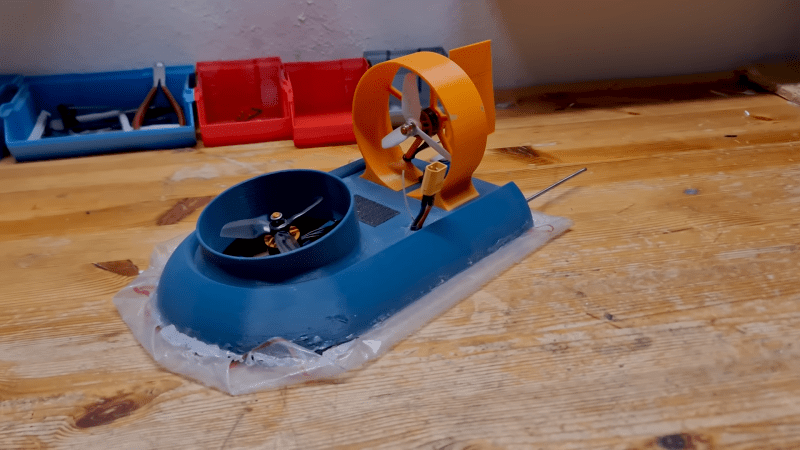These days, it’s pretty cheap and easy to build your own little RC hovercraft. [ValRC] demonstrates just that with a hovercraft build that is surprisingly nimble, and fast to boot.
The build started with a design [ValRC] found online. It was simple enough to print and assemble, needing only a pair of a brushless motors, a speed controller, a receiver, and a servo to run the show. The design uses a plastic bag as a skirt, assembled around a 3D printed frame. That proved to be the hardest part of the build, as hot glue didn’t want to play nice with the thin garbage bag.
Even despite the challenges, once assembled, the hovercraft performed well. It readily slid around on a cushion of air, drifting across asphalt with abandon. Upgrades included a better rudder and a skirt made of thicker and more resilient plastic. The final craft looked mesmerizing as it glided over the smooth concrete of a parking garage with ease.
A hovercraft is, honestly, one of the cooler printable projects for beginners. All you need is a simple design, some powerful motors, and you’re good to go.
















Holy cow that’s awesome!
I wonder if it could be efficient to build a large one to lift charge.
My guess is “no, wheels are going to work better”, but then whole trains are built that way too.
Practical use-case: warehouse areas with small weight pallets that are more tedious to move around with wheels.
That concept is old AF and in use but just not for small pallets but for huge things usually.
I am not a fan of these articles. Someone else created the design that was used, and everything the OP “fixed” wasn’t an issue with the OG design. For instance his weight distribution issue was caused by him putting an FPV on it…
Agree, it doesn’t give credit enough to the original designer. I think an article should always start there and in the end could point to a youtube vid, since apparently we like that so much.
shame on me for not watching the video yet but at first glance I wondered if a big inner tube would make a better skirt than plastic bags? Even an old one that could be cut down and joined to fit might work, no?
I was thinking the same thing, an inner tube could be cut and glued to fit and would be quite resilient. I’ve been wanting to build a hovercraft for years, i even have a cox .049 waiting to be used as the lift motor… Maybe this 3D printed body is the catalyst i need to get started…
Now I want to see someone recreate the F-zero game from the SNES in the real world.